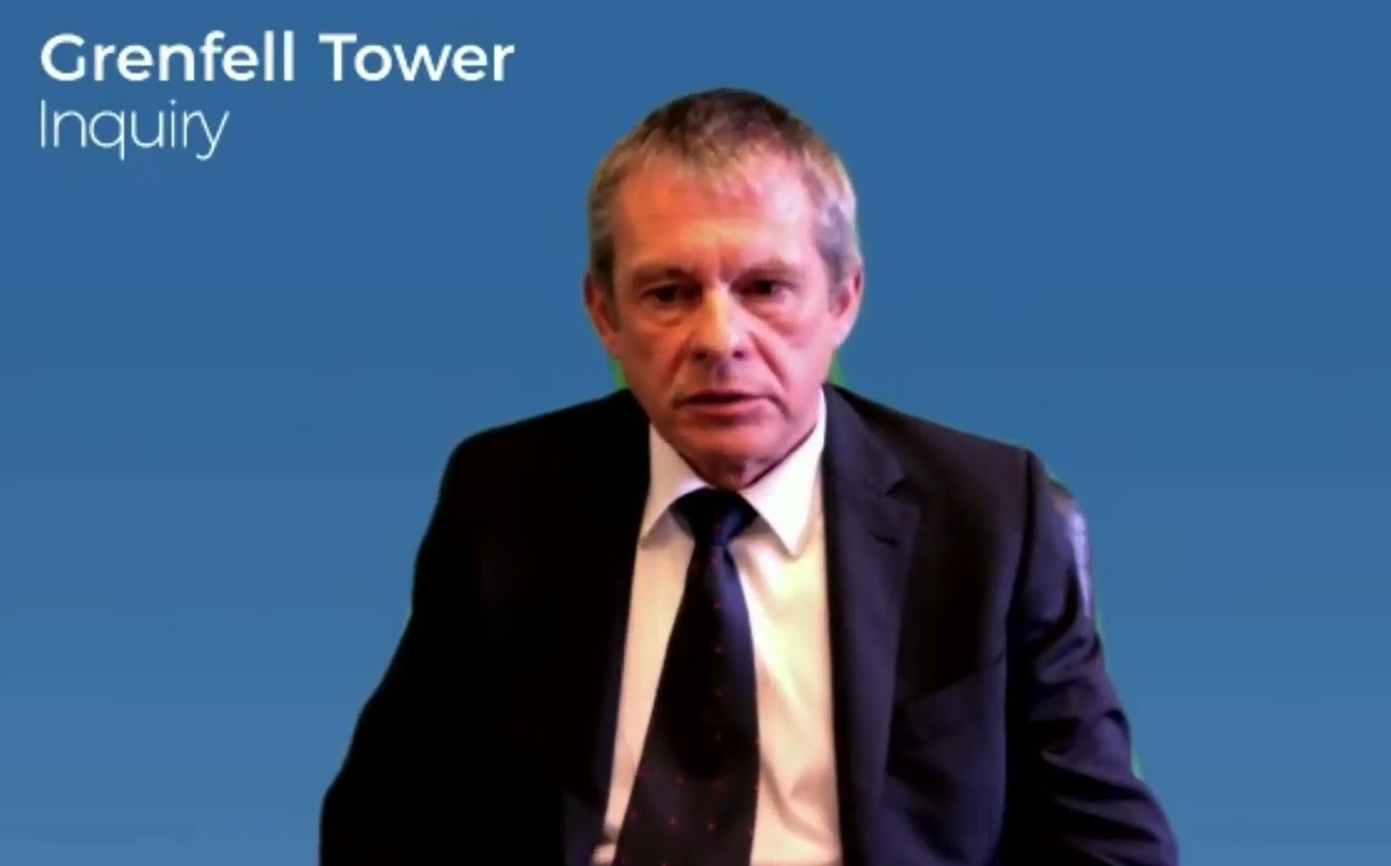
Arconic executives, who were warned of how dangerous ACM cladding with a PE core could be after a 2009 fire in a Bucharest building, took no action because there was no injury and the fire was limited to the outside of the structure, the Grenfell Tower Inquiry has heard.
Giving evidence for a third day in French through an interpreter, Arconic president Claude Schmidt was asked about a July 2009 email that he and colleagues Guy Sheidecker and Robert Quattrocchi received from technical manager Claude Wehrle following the blaze at the Millennium Business Centre in Bucharest.
The fire left one entire side of the building damaged.
Wehrle said in his email: “Here are some pictures to show you how dangerous ‘PE’ can be when it comes to architecture.”
Sheidecker said it was “clear” that the material on the Bucharest building was ACM with a PE core, although Schmidt said in yesterday’s (18 February) hearing that he did not think that it was an Arconic product.
Lead counsel to the Inquiry Richard Millett then turned to Schmidt’s written statement, given ahead of the hearing, in which he said he did not recall the 2009 emails, nor having any discussion about them with Wehrle.
Millett asked: “Is it right that you have no independent recollection of this fire or these emails or any discussion that you might have had about this incident.”
Schmidt confirmed that it was.
Millett asked: “Was this not a very important event for Arconic?”
Schmidt replied: “It was an important event for the whole profession, certainly.”
Millett asked if as a result of being told about the fire, Arconic established any education or training systems within Arconic about the uses and dangers of PE on high-rise buildings.
Schmidt said: “No, not as far as I know.” Although he added that it may have been discussed in internal meetings.
Millett asked: “Given the importance of this event, as you say, to the whole profession, why were no steps taken within Arconic at the time to make sure that Reynobond would not be implicated in a similar event in the future?”
Schmidt said: “I think that in fact if you look at the photograph, I mean, it’s only the outside of the façade that’s gone, so that’s the first big thing. And, second, as far as we knew, there had been no injury. And we also knew that the product was used very widely and very generally, on the market, and besides, I mean, we didn’t see on the market that the position of our competitors had changed.”
Millett responded: “So that I’m clear, is the reason why Arconic took no steps to do anything internally with Reynobond 55 PE because it only affected the outside of this building, there was no loss of life, or no injury, and it was a widely used product? Have I got your evidence clear about that?”
Schmidt replied: “Yes.”
Schmidt said he “didn’t know” whether Arconic told its salesforces to warn customers about the danger of PE-cored ACM and to check local regulations carefully.
Cassette variant fire test ‘very confidential’
The Inquiry also heard how Wehrle had warned colleagues in a 2010 email to keep the fact that Reynobond PE in cassette form did not obtain a Euroclass B standard “VERY CONFIDENTIAL”.
In previous hearings, the Inquiry was told how Reynobond 55 PE achieved Euroclass B in rivet format but that the test on the cassette variant had to be stopped after 850 seconds – something that Wehrle said at the time he regarded as a “rogue result”. Reynobond 55 PE went on to be awarded a BBA certificate in the UK in 2008 on the strength of the Euroclass B result achieved for the rivet format, although the stopped test on the cassette variant was not presented to the BBA.
The March 2010 email exchange concerned the suitability of Reynobond for the Spanish market, where Arconic found themselves “obliged” to recommend the fire-resistant FR core because Spanish law required the minimum B-s3,d2 classification for architectural use.
Wehrle said: “Reynobond PE in cassette form doesn’t obtain level ‘B’ either! Having said that, this shortfall in relevance to this standard is something that we have to keep as VERY CONFIDENTIAL!!!!”
In yesterday’s (18 February) hearing, Millett asked Schmidt: “If Arconic, Claude Wehrle for this purpose, genuinely believed that the result of test 5B was a rogue, or aberrant, he would have said so in this message, would he not? Do you accept that?”
Schmidt said: “Yes.”
Millett continued: “So does that tell us, perhaps, that in fact he knew very well that test 5B was not a rogue?”
Schmidt said: “Yes, except if he carried out another test in the meantime, but something I know nothing about.”
Later on in the exchange, Millett asked: “Do you accept that Arconic, through Mr Wehrle, knew that such people – architects, designers, construction professionals – were being misled by the claimed fire certification for cassette?”
Schmidt replied: “Yes.”
Asked if he could explain “how this deception was being practised on your watch”, Schmidt replied: “No.”
Wehrle is one of a number of former Arconic employees who has refused to appear before the Grenfell Tower Inquiry, citing fear of prosecution under French law.
The Inquiry continues.










